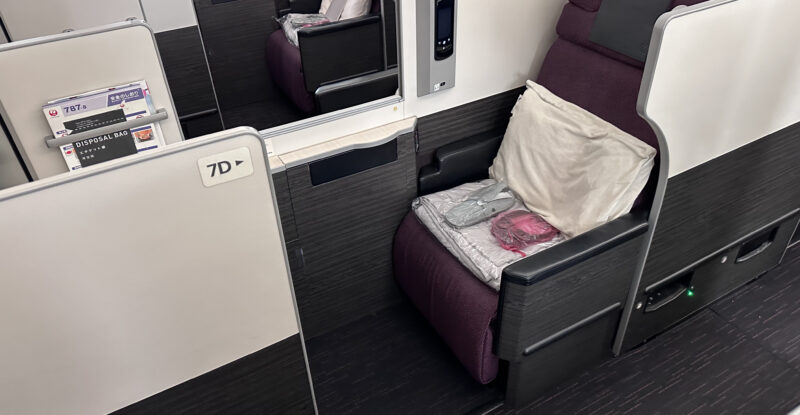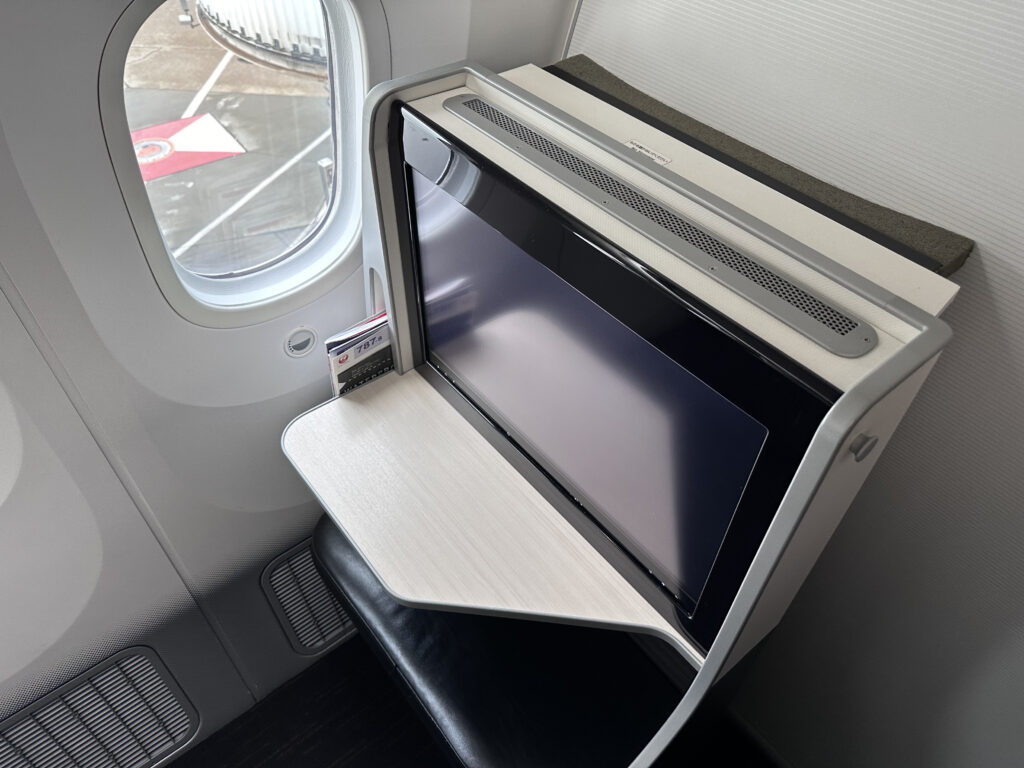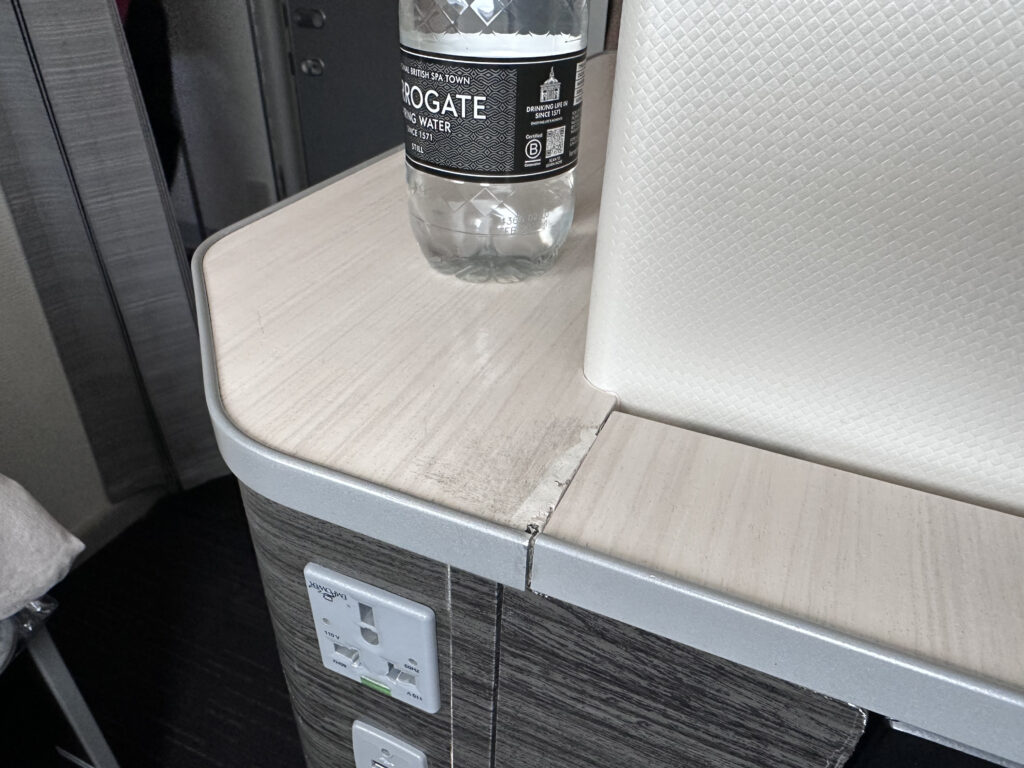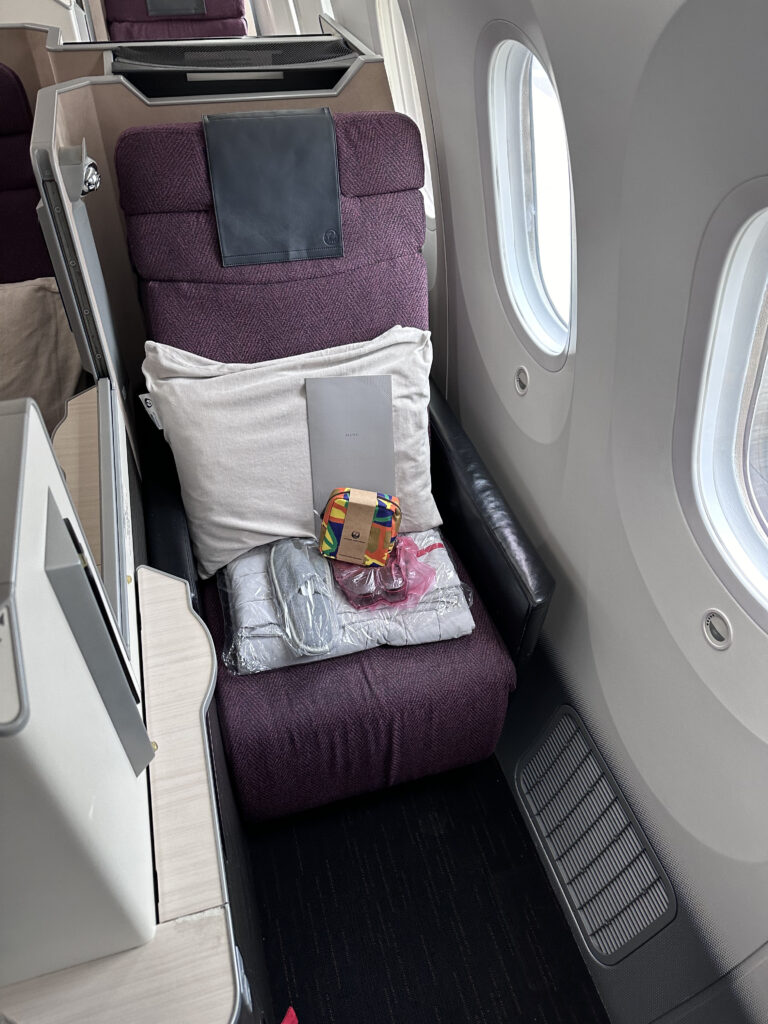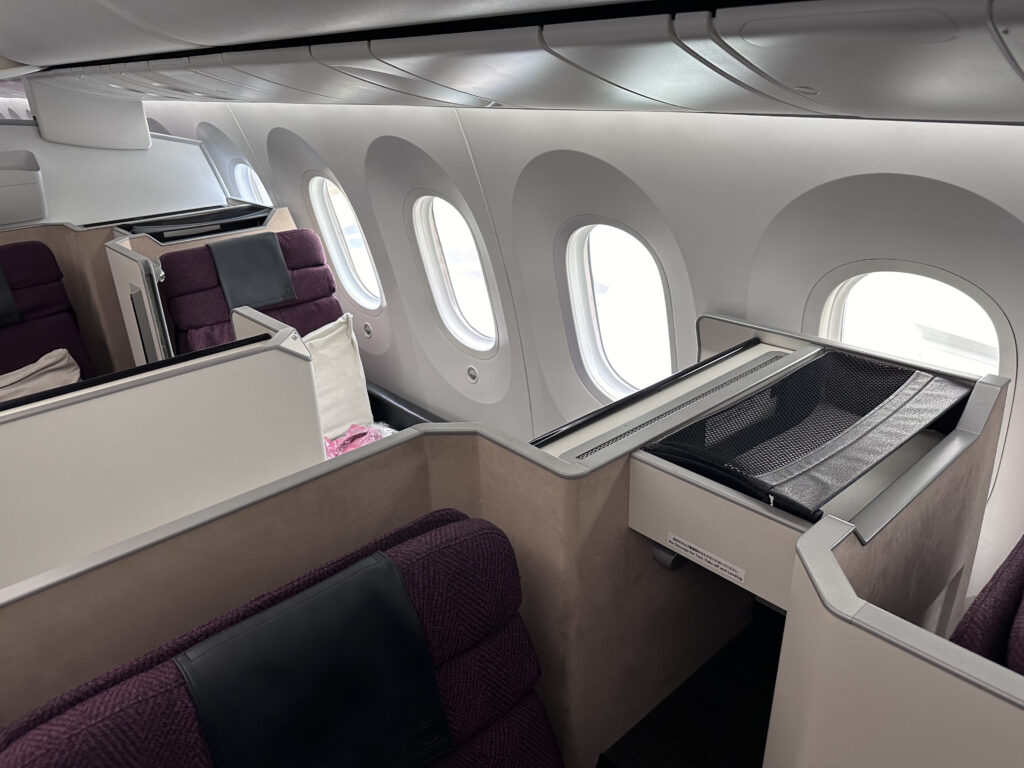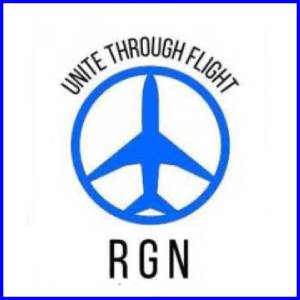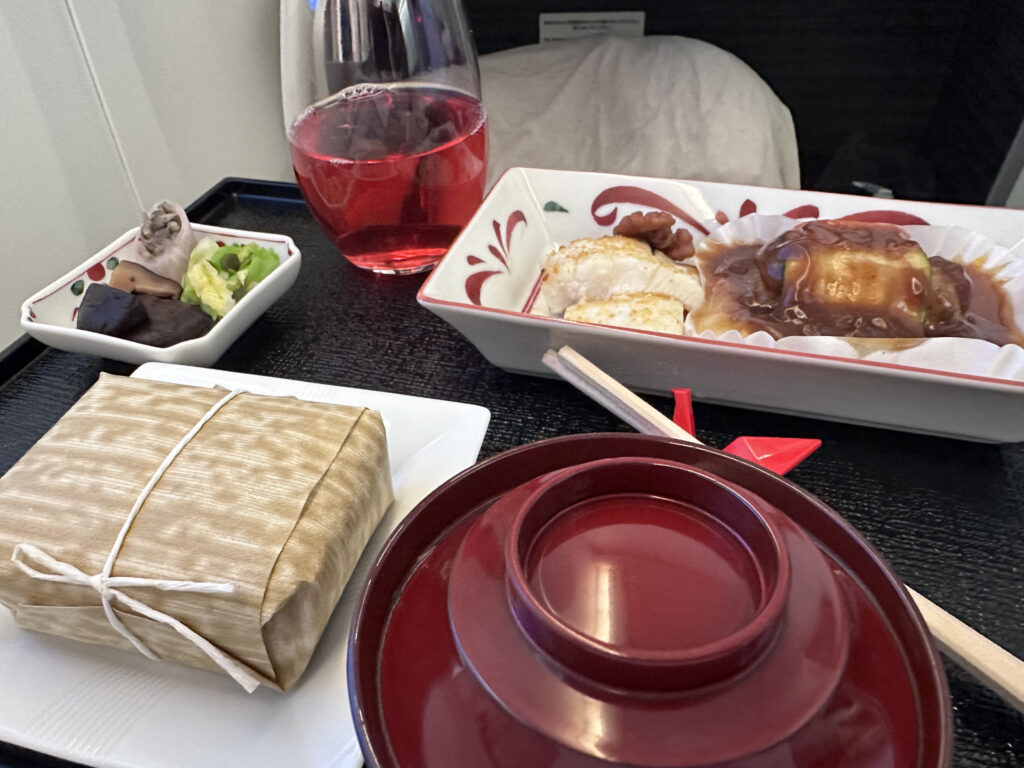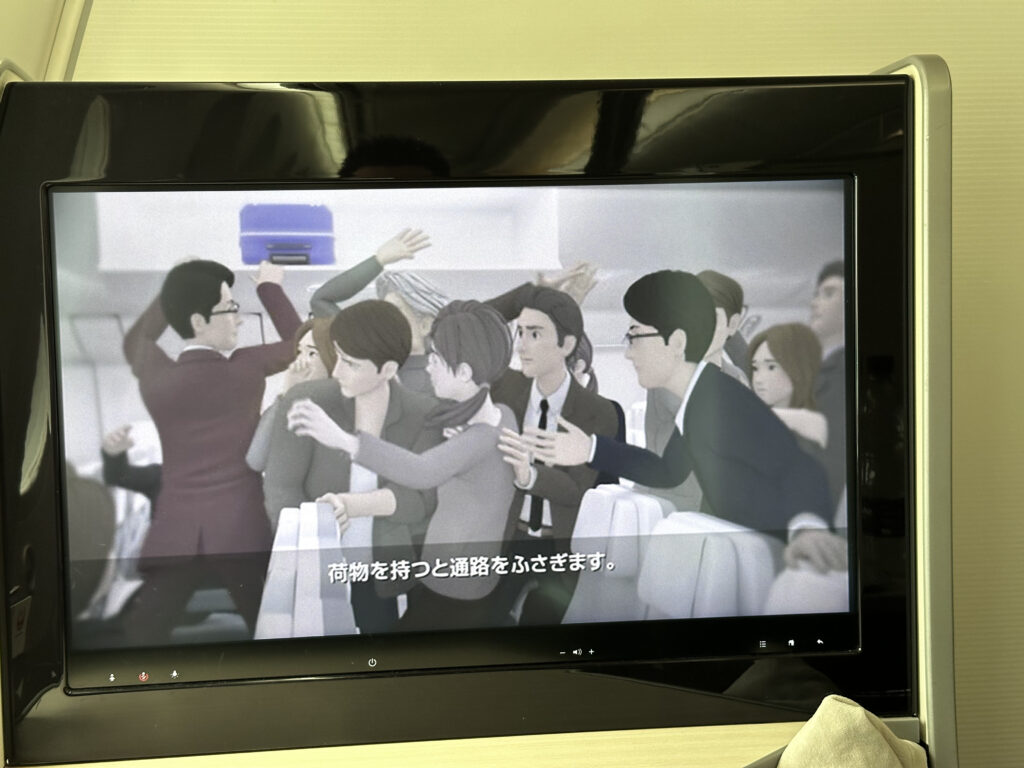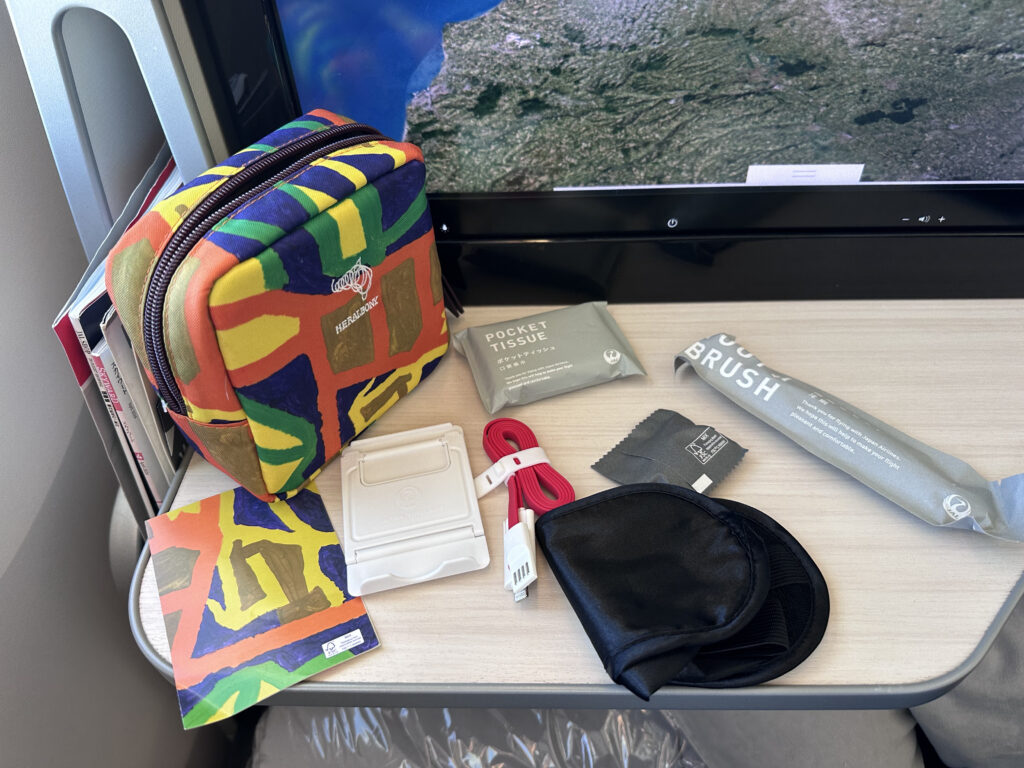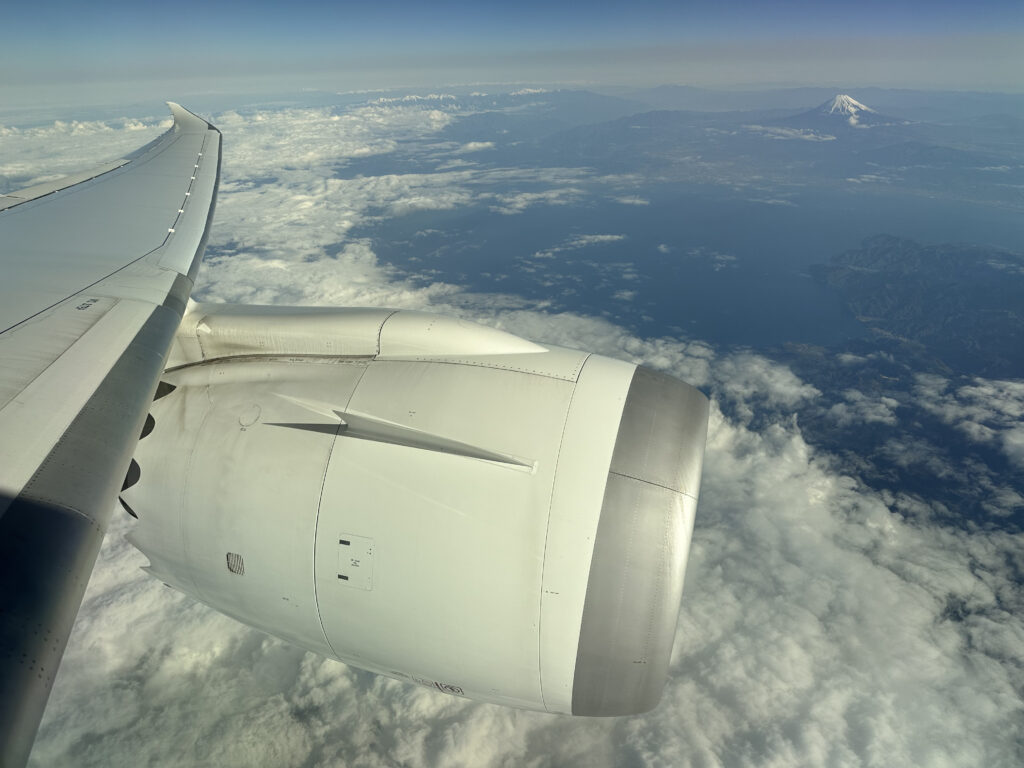 Often, looking back on a product from the point of view of a deep-dive into its replacement is informative, and so it was on my recent trip to Tokyo, when — full disclosure — Japan Airlines flew me to its home base in order to test out its newest business class and visit its headquarters.
Often, looking back on a product from the point of view of a deep-dive into its replacement is informative, and so it was on my recent trip to Tokyo, when — full disclosure — Japan Airlines flew me to its home base in order to test out its newest business class and visit its headquarters.
I flew on JL42, the morning flight from London Heathrow to Tokyo Haneda, originally scheduled on a Boeing 777-300ER but later changed to a Boeing 787-8 Dreamliner, the E12 variant with just business and economy on board.
I was frankly delighted to see the 787 replacing the 777, even though business class features the same Collins Apex seats. With Russia’s war on Ukraine removing Russian overflight, London-Tokyo is now thirteen and a half hours, and I was supremely grateful for the 787’s lower cabin altitude on this ultra-longhaul flight.
JAL’s boarding was characteristically — for JAL, not for Heathrow — swift and effective, from one of the Terminal 3 gate lounges with adequate seating for all, which means airlines can avoid the boarding-not-boarding situation where everyone stands in the alternately boiling/freezing jetway before the crew are actually ready for passengers.
I’ve been a fan of the Collins Apex seat since I first encountered it in a hidden backroom facility in Tokyo in 2012: it’s remarkably spacious and feature-filled even for a current-generation seat, let alone one that’s more than a decade old.
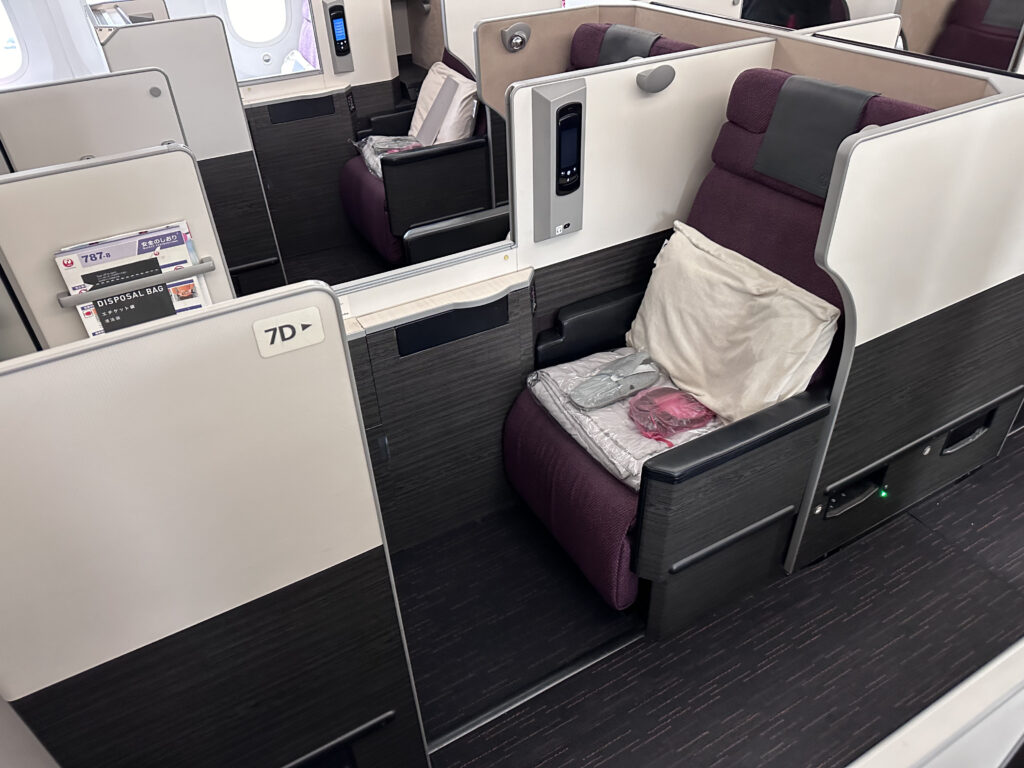 The wide seat (in a partly staggered 1-2-1 configuration on the 787, with the stagger only at the outboard pairs) reclines as a Z-bed to flat, with the legrest meeting the spacious footwell area to offer a spacious sleeping position that enables even the tallest travellers with the largest feet to roll over on their sides without feeling cramped. (Your author is 6’3”/190cm and this is by no means a given on modern seats.)
The wide seat (in a partly staggered 1-2-1 configuration on the 787, with the stagger only at the outboard pairs) reclines as a Z-bed to flat, with the legrest meeting the spacious footwell area to offer a spacious sleeping position that enables even the tallest travellers with the largest feet to roll over on their sides without feeling cramped. (Your author is 6’3”/190cm and this is by no means a given on modern seats.)
There was some heavy wear and repair on parts of the seat — the corner where the table and cocktail shelf intersect in particular — but the functionality was all in working order.
Truly excellent Airweave mattresses added real padding to the seat when fully flat, while a variety of pillows and blankets brought welcome softness in both relaxing and sleeping mode. I do have questions as to whether quite so much single-use plastic is required to cover blankets and slippers these days.
Inflight connectivity, provided by Panasonic’s Ku-band system, worked well for email and socials throughout the flight.
The seat does, however, have three main issues. First, for the airline, its generous amount of passenger space is generated by very little tesselating overlap between rows, meaning that it is less space-efficient than other products.
Second, for the passenger, there is no enclosed storage, although this is resolvable by the fact that you can keep a handbag easily on top of the ottoman while seated and under the ottoman while sleeping.
Third, though, is the zero-sum issue that arises with non-suite staggered products, where the seats set away from the aisle (such as the one I selected) are far more private than those set right next to the aisle. While the lack of stagger in the centre section mitigates this to a greater extent than other products, passengers seated right next to the aisle do have a less private experience.
The flight itself was pleasant and efficient, with a delicious meal service shortly after takeoff, for which I had selected the Japanese meal, and the very well designed à la carte menu that can be ordered at any point during the rest of the flight.
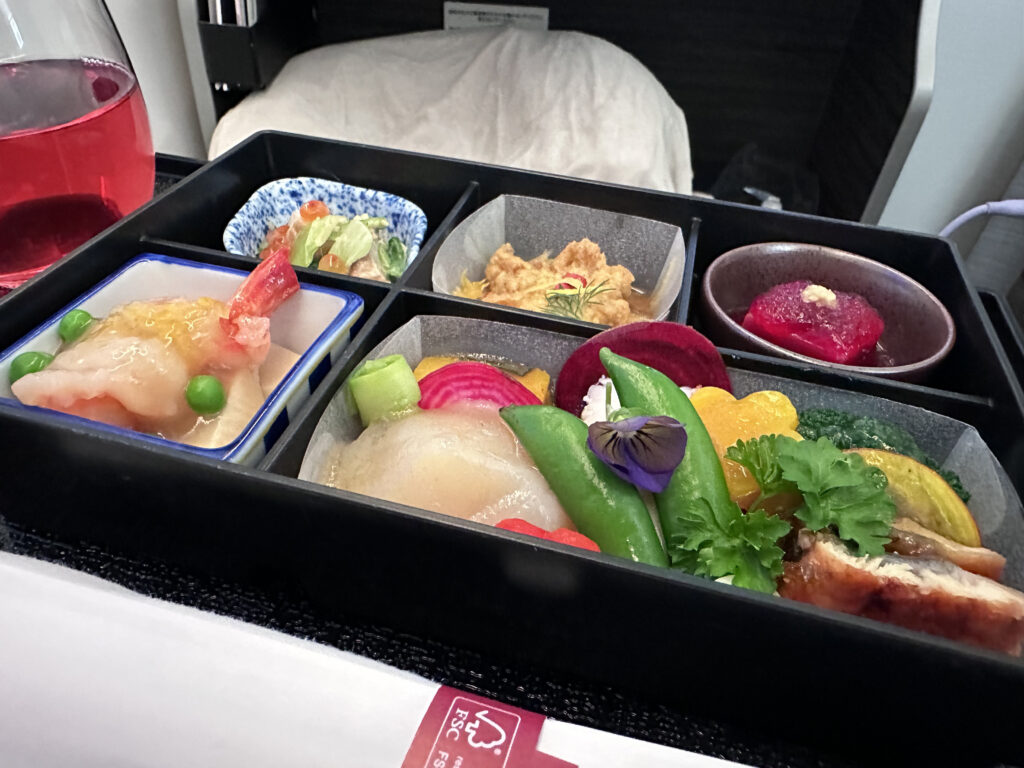 This included not just a wide variety of comfort foods and hearty snacks — from a hearty pork katsu sandwich to the must-try jangara– style noodles — but also a more traditional second meal breakfast, timing-appropriate given the 7am arrival into Tokyo for those who like to reset body clocks with meals.
This included not just a wide variety of comfort foods and hearty snacks — from a hearty pork katsu sandwich to the must-try jangara– style noodles — but also a more traditional second meal breakfast, timing-appropriate given the 7am arrival into Tokyo for those who like to reset body clocks with meals.
The crew were excellent, even given this lightly loaded cabin, and passed through unobtrusively often to see whether passengers needed anything, as well as responding instantly to the call bell.
The inflight entertainment system — the early 2010s Thales AVANT — was definitely showing its age and very clunky to use, and even the latest Hollywood blockbusters were not offered in high resolution. With the large screens, this was very noticeable. Content-wise, there was an unfortunate lack of non-movie programming for spending just 30 or 60 minutes watching something of interest over a meal, especially for non-Japanese speakers.
For example, while it was a joy to see a single episode of We’re Here, the progressive TV show featuring drag entertainers brightening the lives of LGBTQ+ people in less accepting locales, there was only one episode of this and many other shows. This diversity of content topics is laudable, but it needs more depth to match its breadth.
As the 787 approached Tokyo with Mount Fuji just over the wing of the aircraft, though, I reflected that the overall JAL experience is a strong one, led by the soft product but where the hard product is no slouch either.
With an upgrade to the visual quality and amount of inflight programming, and with the new Safran Unity suites forthcoming, it could be world-leading.
Related Articles:
- Collaboration brings Boltaron translucents to life on JAL A350
- JAL A350 interiors supply chain issues raise spectre of delays in 2024
- JAL’s new flagship A350-1000 astounds with aesthetics and space
- JAL first class continues to shine despite delayed hard product
- JAL 787: cushy for longhaul economy but could use soft tweaks
All images credited to the author, John Walton




